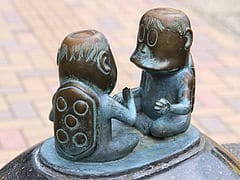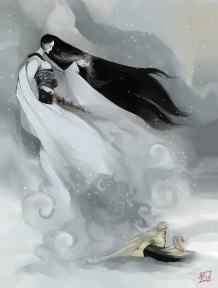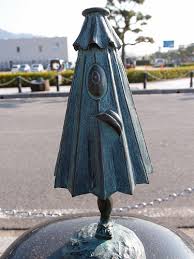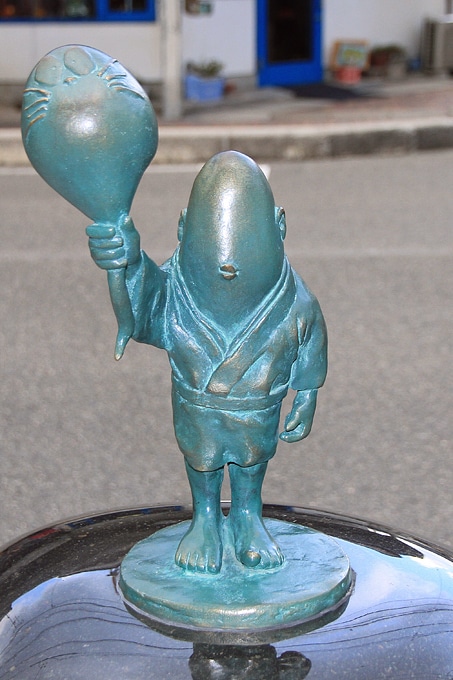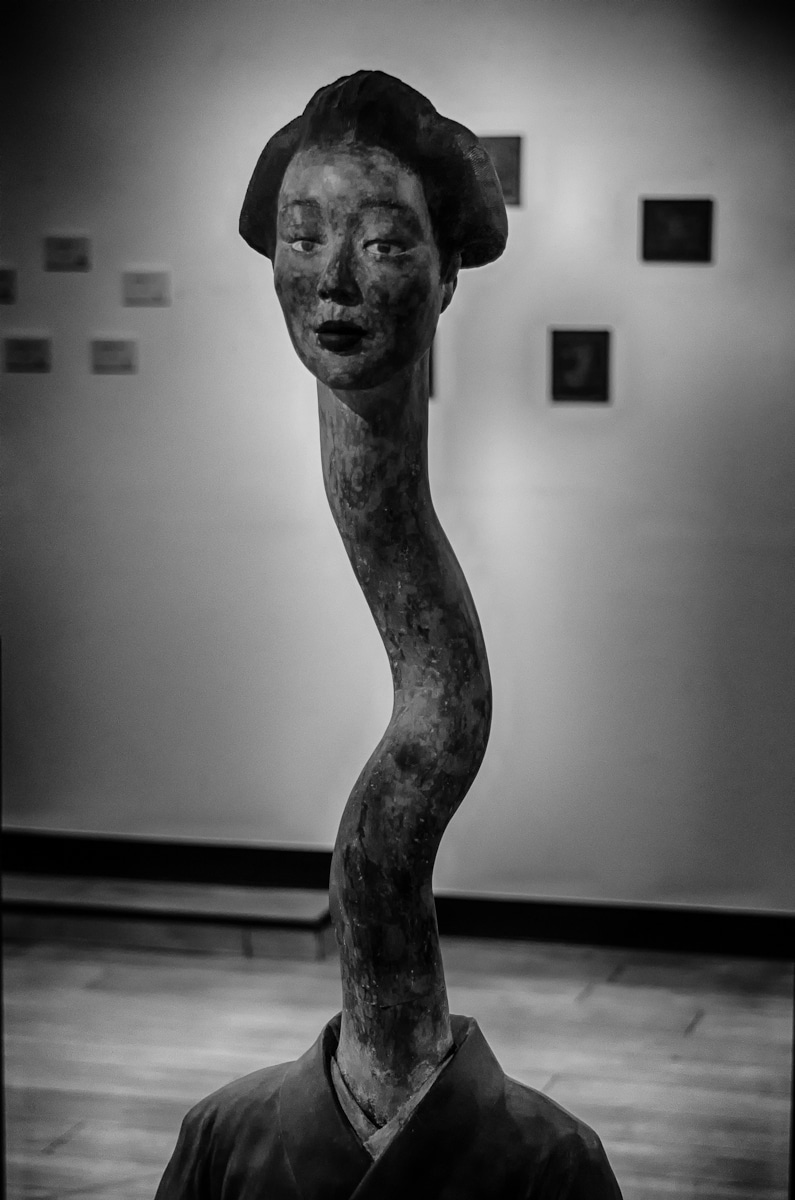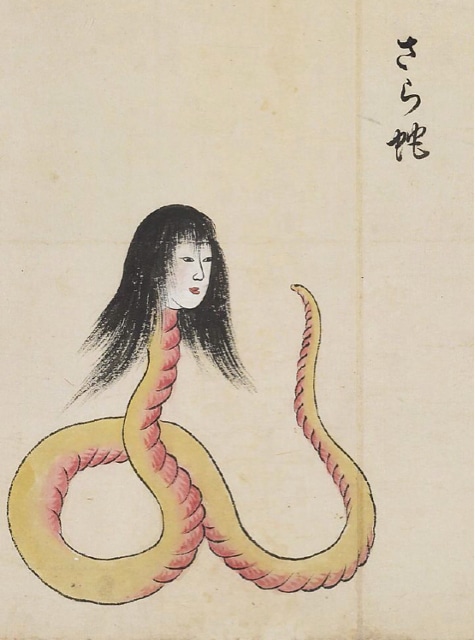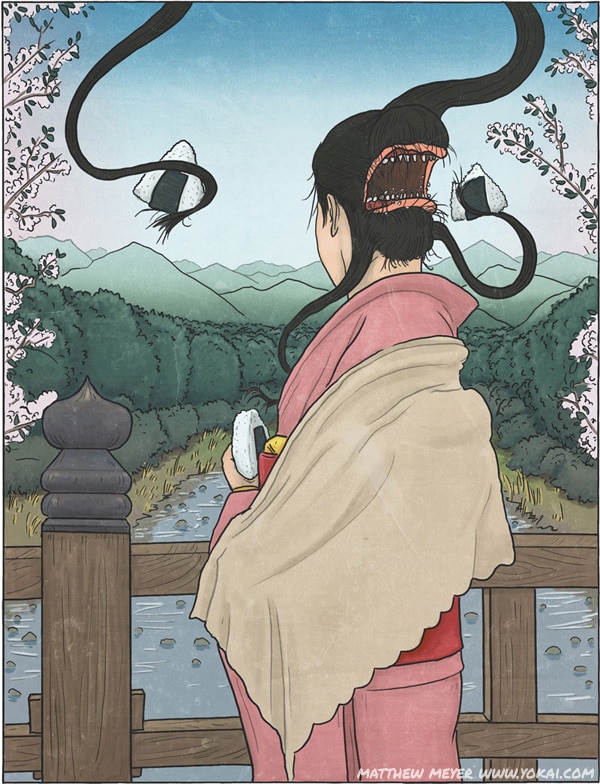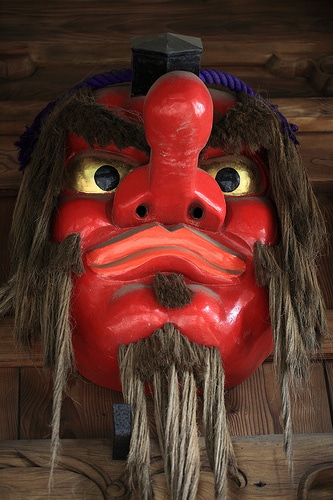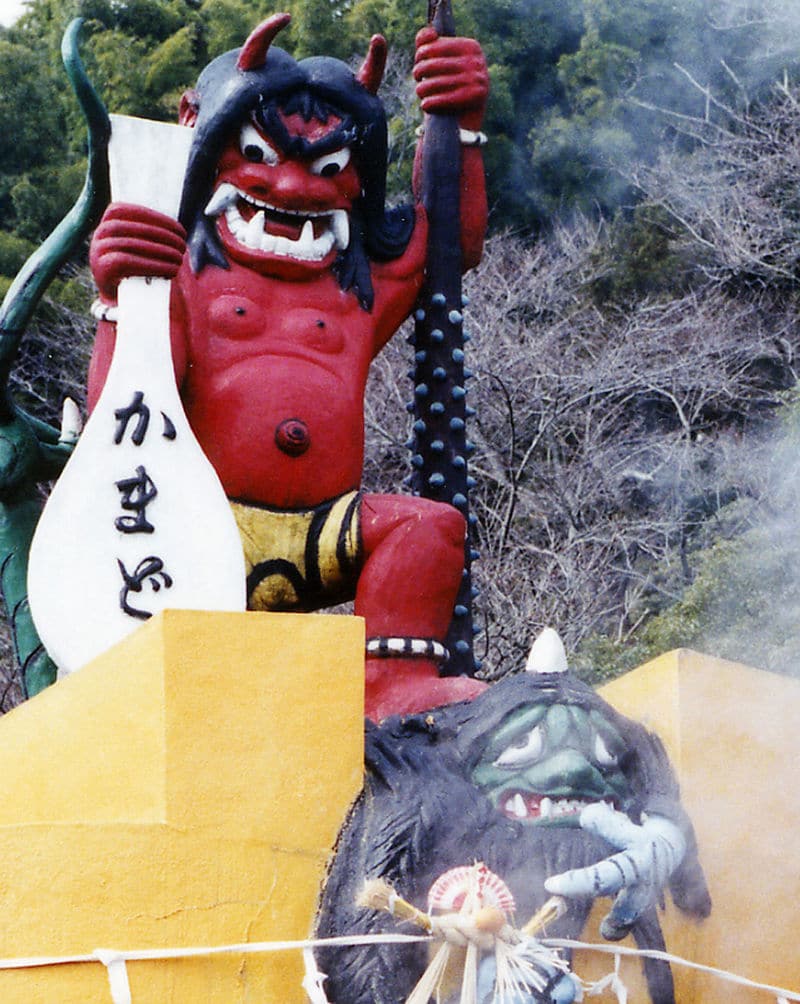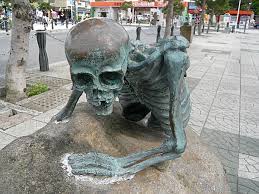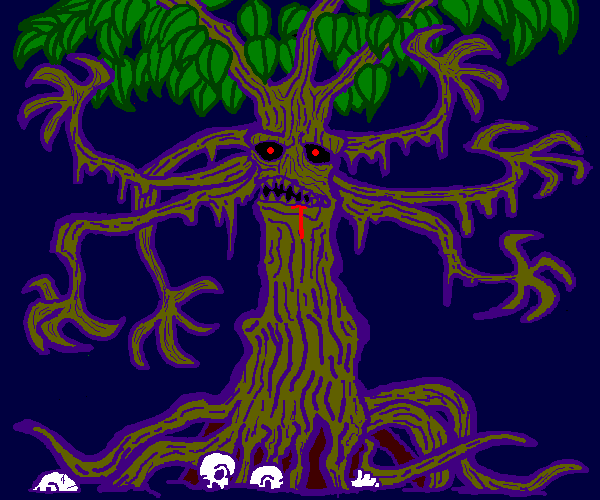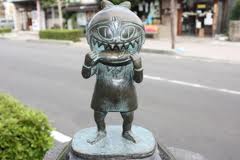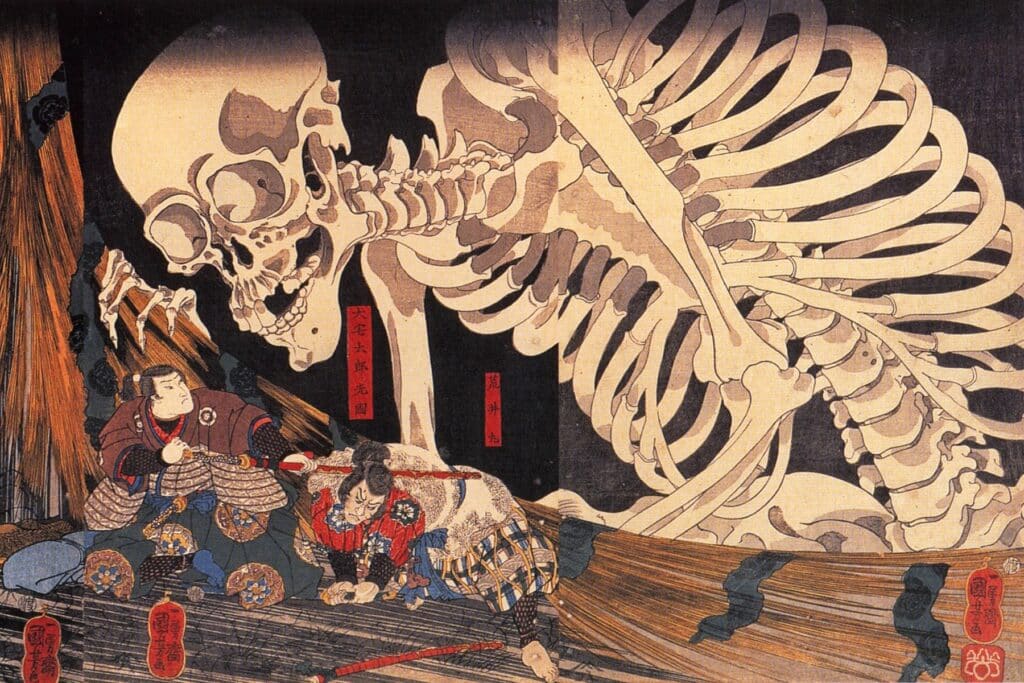
13 Scary Japanese Horror Stories That Will Keep You Up at Night
Japanese folklore is full of things that are just plain creepy.
Thanks to some popular movies, Japan is world-renowned for ghosts and monsters that’ll make you run for the hills—if you can outrun them, of course.
Also, Japanese horror stories are usually told in the summer (unlike in the West, where they’re told around Halloween season) in the belief that the chills from the tales will help to cool you down.
Let’s take a look at some scary ghost stories from Japan that’ll make you wish you never knew them!
Contents
- 1. Kappa – 河童 (かっぱ)
- 2. Snow Woman – 雪女 (ゆき おんな)
- 3. Umbrella Ghost – 唐傘お化け (からかさ おばけ)
- 4. Faceless Ghost – のっぺら坊 (のっぺらぼう)
- 5. Rokurokubi – ろくろっ首 (ろくろっくび)
- 6. Wet Woman – 濡女 ( ぬれ おんな )
- 7. Two-Mouth Woman – 二口女 (ふたくち おんな)
- 8. Tengu – 天狗 (てんぐ)
- 9. Oni/Ogre – 鬼 (おに)
- 10. Gashadokuro – がしゃどくろ
- 11. Yokai Tree – 樹木子 ( じゅぼっこ )
- 12. Slit-Mouthed Woman – 口裂け女 (くちさけ おんな)
- 13. Hanako-san – 花子さん (はなこさん)
- The Spiritual Beliefs at the Heart of Japanese Scary Stories
- Japanese Ghosts: Essential Vocabulary
- And One More Thing...
Download: This blog post is available as a convenient and portable PDF that you can take anywhere. Click here to get a copy. (Download)
1. Kappa – 河童 (かっぱ)
Literally “river boy,” these creatures resemble turtles with webbed, human-like feet and hands. About the size of small children, they can stand, swim and walk on land. They usually inhabit ponds or rivers.
The 河童 is mainly characterized by a small bowl or plate-like area on the head that must have water at all times. If the plate-like area dries out, superstition has it that it’ll lose its powers or even die. Some stories tell of how the plate can be covered to keep the creature from drying out.
Primarily, the 河童 is used as a cautionary tale to children to be careful while swimming. They’re tricksters that can either be mischievous or outright malevolent. The more sinister stories have them luring people or animals, usually horses, into deep water to drown or be eaten.
Fun fact: the 河童巻き (かっぱ まき) was likely named after them owing to their love of cucumbers (which the 河童巻き has).
2. Snow Woman – 雪女 (ゆき おんな)
The 雪女 is, as her name suggests, the spirit of a woman who died in the cold.
Like the snow she lives in, this woman has pale white skin, wears white clothes and has the long black hair characteristic of Japanese ghosts. She is very beautiful and floats along the snow leaving no trace behind.
Don’t let her beauty fool you, though—she’s a ruthless killer.
In the stories, she usually appears to travelers and traps them in snowstorms, breathing on them until they’re frosted dead or leading them out farther and farther so they die from hypothermia.
In some versions (like the famous Lafcadio Hearn story), she will sometimes let victims go if they’re beautiful or young. Do you think you’re good-looking enough to be spared?
3. Umbrella Ghost – 唐傘お化け (からかさ おばけ)
According to Japanese folklore, any human tool that is old enough (e.g. a hundred years old) can take on a (sort of) life of its own.
For example, the 唐傘お化け is the ghost of a very old umbrella. It’s usually depicted with one eye and jumping around on one leg in a 下駄 (げた) sandal.
There isn’t necessarily a particular story about this creature, but it’s common in depictions of haunted houses and is usually a representative character for ghosts in Japan.
4. Faceless Ghost – のっぺら坊 (のっぺらぼう)
This is a creature that usually assumes normal human form, but is able to wipe its facial features off so a blank stretch of skin is left where the eyes, nose and mouth should be.
These creatures don’t harm anyone in the stories, but they do like to scare people (for their own amusement, probably). There’s no telling if it could frighten you to death, so watch out!
Studio Ghibli’s “Pom Poko” includes a scene with a のっぺら坊, which (spoiler alert) was actually a shapeshifting raccoon.
5. Rokurokubi – ろくろっ首 (ろくろっくび)
No one knows where the “ろくろ” part of the name comes from, but “首” refers to the neck, which is how this ghost is typically identified. They can appear as regular humans, but can stretch their necks to abnormal lengths.
There’s also a variant of the ろくろっ首 whose head can detach from the neck and fly around freely. This one is called 抜け首 (ぬけくび) or “Escape Neck.” As its name suggests, the 抜け首 has the ability to detach its head from the rest of its body.
Although they’re usually female, male ろくろっ首 exist too (see the Lafcadio Hearn story named after this monster).
6. Wet Woman – 濡女 ( ぬれ おんな )
濡女 literally means “wet woman.” This monster has the head of a woman and the body of a snake.
You can see an image of her in “The Illustrated Volume of a Hundred Demons” ( 百怪図鑑 /ひゃっくかい ずかん), a book from the Edo Period that depicts ghosts, spirits and monsters from folklore. Stories about the 濡女 usually involve her luring people into the water and then killing them.
Other versions depict them as creatures simply trying to wash their hair. In those stories, she only reacts violently when people bother her during her hair-washing ritual. (Never interrupt a woman’s beauty regimen, people!)
7. Two-Mouth Woman – 二口女 (ふたくち おんな)
As her name implies, this creature has two mouths. One is a normal mouth that doesn’t eat much (if at all). The other is located on the back of her skull. The second mouth can control the woman’s hair to form tendrils that will grab food to feed itself.
The reasons for the appearance of this second mouth vary, but they’re usually because of a miserly husband who couldn’t even be bothered to feed his own wife. (Penny-pinchers beware!)
Other stories credit the second mouth to the woman’s own miserly ways. In these versions, the woman refuses to feed her stepchild, who dies and becomes the attached second mouth to torment and exact revenge on the terrible stepmother.
8. Tengu – 天狗 (てんぐ)
Literally “heaven dog,” these creatures originated in China where they most closely resembled dogs. When or how the 天狗 came to have the features of birds and humans is unknown. What we do know is that the image of this creature has changed drastically over time.
Originally depicted as disruptive and warlike demons, they’re now often shown as protectors of mountains and forests. They haven’t completely lost their sly and dangerous nature, though.
There are many different stories featuring 天狗—and let’s just say I wouldn’t do anything to tick them off if I were you.
9. Oni/Ogre – 鬼 (おに)
These are arguably the Japanese versions of the Western demons, devils or ogres.
Their physical descriptions vary, but generally they’re ugly, large and have claws and horns. They often have red or blue skin, wear loincloths and carry a 金棒 (かなぼう), similar to a club or stick.
鬼 appear in the Japanese children’s story “Peach Boy” ( 桃太郎 /ももたろう) and “The Red Ogre Who Cried” ( 泣いた赤鬼 /ないた あかおに), a rare story about kindhearted ogres.
10. Gashadokuro – がしゃどくろ
Skeletons are creepy enough as they are. Imagine one that’s large enough to stick its head and torso over an entire building!
One version of their origin says that the がしゃどくろ are the bones of people who died of starvation. Another says that you’ll often find them near old battlefields where hordes of warriors died with unfinished business and are out to finish said business with the living.
Even though you’ve probably never heard of them before, a がしゃどくろ makes a quick appearance in a festival scene from “Pom Poko.” There’s also one that serves as a sort of “mini-boss” in the Western animated film “Kubo and the Two Strings,” which was based on Japanese folklore.
11. Yokai Tree – 樹木子 ( じゅぼっこ )
Another Japanese monster that shows up in former battlefields, the 樹木子 survives on blood from the people it grabs who wander too close to it.
Unfortunately for those who want to avoid it, it doesn’t appear to be too different from other trees. You’ll only know it’s a 樹木子 when you stick an axe into it and it bleeds blood instead of sap.
By then, you’ve probably already become its next victim!
12. Slit-Mouthed Woman – 口裂け女 (くちさけ おんな)
True to her name, the Slit-Mouthed Woman is a woman whose mouth has been slit from ear to ear. She’s probably the most famous creature from Japanese urban legends and there are many variations on how she came to be.
One story goes that her husband mutilated her with scissors. Due to her anguish over what happened, she now wanders the urban areas of Japan and terrorizes anyone unlucky enough to meet her.
According to most versions, she’ll ask you whether you think she’s pretty, and your life depends upon your answer.
If you say “no,” she’ll kill you with scissors on the spot.
If you say “yes,” she’ll reveal her slit mouth and ask whether you still think she’s pretty. If you say “yes,” she’ll give you the same slit as her own so “both of you are pretty”—and if you say “no,” she’ll kill you anyway.
Luckily, there are many ways to escape this “damned if you do, damned if you don’t” situation. One is to answer ambiguously (e.g., “I think you look okay”) or ask a question back, which will confuse her and give you time to escape.
13. Hanako-san – 花子さん (はなこさん)
花子さん is a female spirit that haunts school bathrooms. According to the stories, she’ll appear if you say her name in the third stall in the bathroom on the third floor.
This urban legend has been whispered around many Japanese schools—not unlike how children in the West whisper about seeing Bloody Mary in a mirror.
There are so many versions of where she came from, how to escape her and what would happen if you meet her that I’d have to write an entirely new article (or articles) on her alone!
The Spiritual Beliefs at the Heart of Japanese Scary Stories
Japanese horror stories are firmly rooted in beliefs in the spirit world.
For example, ghosts come about when someone dies and their spirit cannot move on to the afterlife. This is usually because the funeral rites weren’t done properly, the person died violently or the person had unfinished business before departing the world of the living. As a result, their ghosts become angry or malevolent and they’re usually the ones featured in Japanese scary stories.
On the other hand, when the dead are given the proper burial rites, their spirits are believed to join their ancestors in the afterlife to watch over their living loved ones. They return once a year to the world of the living, which is when they’re honored via a holiday called お盆 (おぼん) that usually takes place in August.
Japanese Ghosts: Essential Vocabulary
There are several terms in Japanese for ghosts, just as Westerners often describe ghosts as “specters,” “demons” or “wraiths.” For example:
- 妖怪 (ようかい) — A broad term for supernatural beings, 妖怪 includes ghosts and creatures that possess spiritual supernatural powers like shapeshifting. There’s a popular video game series called 妖怪ウォッチ (ようかい うぉっち) based on 妖怪. Another term for 妖怪 is 物の怪 (もののけ) which lends its name to a famous Studio Ghibli movie, “もののけ姫” or “Princess Mononoke.” And if you’re into manga, “ゲゲゲの鬼太郎” (げげげの きたろう) (which has been adapted into an anime) popularized 妖怪 and added new ones to the old folklore.
- お化け (おばけ) — The literal meaning of お化け is “thing that changes,” and it’s a type of shapeshifting 妖怪.
- 幽霊 (ゆうれい) — 幽霊 are spirits that haven’t been allowed to go on to the afterlife. A common utterance from 幽霊 in fictional media is「 恨めしや~! (うらめしや~!)」or “I will get my revenge!” If you want to see examples of 恨めしや~!being used, you can hop on to a language learning platform like FluentU.
FluentU takes authentic videos—like music videos, movie trailers, news and inspiring talks—and turns them into personalized language learning lessons.
You can try FluentU for free for 2 weeks. Check out the website or download the iOS app or Android app.
P.S. Click here to take advantage of our current sale! (Expires at the end of this month.)

- 亡霊 (ぼうれい) — This is another less common term for 幽霊 and roughly translates to “ruined spirits.” These haunt the physical world in a state of purgatory in an attempt to resolve unfinished business.
- Ghost Stories ( お化けの話 /おばけの はなし) or Kaidan ( 怪談 /かいだん) — Both of these terms are used to categorize classic and traditional ghost stories, usually from the Edo Period. There’s also 実話怪談 (じつわ かいだん) or “real ghost stories,” which are usually personal tales that proliferate around the Japanese internet. You can find an entire collection of them in “ こわい! ” (Scary!), which—luckily for language learners—is one of the easiest Japanese books to read.
- お札 (おふだ) — お札 are Shinto writings containing the name of a god ( 神 /かみ). These are blessed by a Shinto shrine and placed on the house for protection from evil spirits, much like how a cross is used in exorcisms in the West. You may see them placed on doors or walls in Japan.
Now that you know about some popular and classic Japanese scary stories, you should be prepared if one of these creatures attacks you or wanders along your path.
There are many books, manga and movies featuring them, so be sure to do your research! And if you really don’t feel like sleeping tonight, go ahead and Google them for more images and videos to fill your nightmares.
Happy haunting!
Download: This blog post is available as a convenient and portable PDF that you can take anywhere. Click here to get a copy. (Download)
And One More Thing...
If you love learning Japanese with authentic materials, then I should also tell you more about FluentU.
FluentU naturally and gradually eases you into learning Japanese language and culture. You'll learn real Japanese as it's spoken in real life.
FluentU has a broad range of contemporary videos as you'll see below:

FluentU makes these native Japanese videos approachable through interactive transcripts. Tap on any word to look it up instantly.

All definitions have multiple examples, and they're written for Japanese learners like you. Tap to add words you'd like to review to a vocab list.

And FluentU has a learn mode which turns every video into a language learning lesson. You can always swipe left or right to see more examples.

The best part? FluentU keeps track of your vocabulary, and gives you extra practice with difficult words. It'll even remind you when it’s time to review what you’ve learned. You'll have a 100% personalized experience.
Start using the FluentU website on your computer or tablet or, better yet, download the FluentU app from the iTunes or Google Play store. Click here to take advantage of our current sale! (Expires at the end of this month.)
